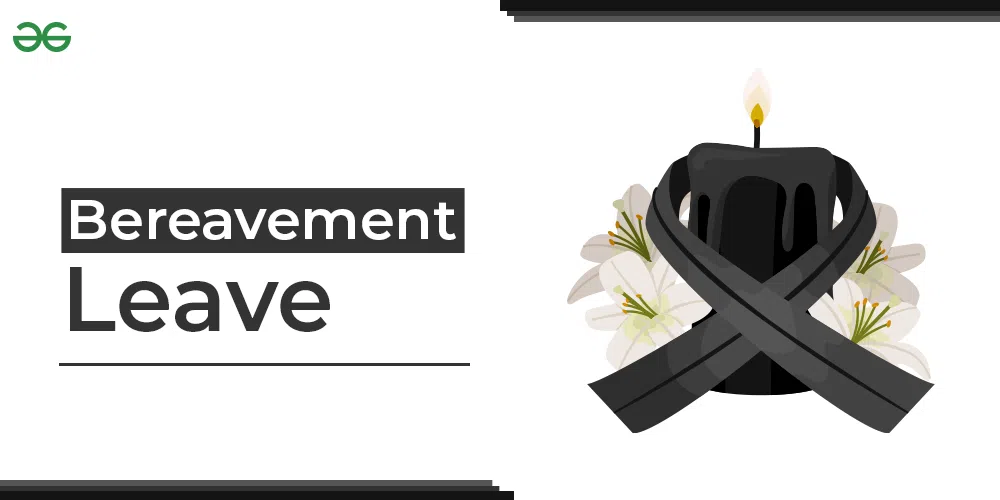In times of loss and grief, individuals often require time away from work to cope with their emotions and attend to personal matters. Bereave leave, also known as bereave leave meaning as a crucial support mechanism for employees during such challenging periods. In this article, we’ll delve into the meaning, significance, and practical aspects of bereave leave, exploring its eligibility criteria, duration, legal considerations, and more.
What is Bereave Leave?
Bereave leave, at its core, is a form of authorized absence granted to employees following the death of a close family member or loved one. It acknowledges the profound impact of bereavement on individuals and provides them with the necessary time off to mourn, make funeral arrangements, and attend to family affairs without the added stress of work obligations.
Definition
Bereave leave is a provision in employment contracts or company policies that allows employees to take time off work following the death of a family member or someone close to them.
Purpose
The primary purpose of bereave leave is to offer employees the opportunity to grieve and mourn without worrying about the consequences on their job security or financial stability. It recognizes the importance of providing compassionate support during times of loss.
Eligibility Criteria for Bereave Leave
Not all employees may be entitled to bereave leave, and eligibility criteria may vary depending on company policies, jurisdictional laws, and the nature of the relationship with the deceased.
Who qualifies for bereave leave?
Typically, bereave leave is available to employees who experience the death of an immediate family member, such as a spouse, child, parent, or sibling. Some companies may extend this benefit to cover other close relationships, such as grandparents or significant others.
Conditions for taking bereave leave
Employees may be required to provide proof of the death, such as a death certificate or obituary, and may need to adhere to specific notification procedures outlined by their employer.
Duration and Entitlement
The duration of bereave leave meaning vary widely, ranging from a few days to several weeks, depending on factors such as the employee’s relationship with the deceased, cultural norms, and company policies.
How long is bereave leave?
Commonly, bereave leave spans between three to five days for immediate family members, though some employers may offer more generous allowances, especially in the case of international or long-distance travel for funerals.
Can bereave leave be extended?
In exceptional circumstances or for particularly traumatic events, employers may consider extending bereave leave on a case-by-case basis. However, this is subject to approval and may involve additional documentation or justification.
Legal Considerations
While bereave leave is often a discretionary benefit offered by employers, certain legal considerations may come into play, depending on the jurisdiction and applicable labor laws.
Legal rights and obligations
Employers are typically required to adhere to relevant employment laws regarding bereavement leave, including any minimum entitlements prescribed by law and the obligation to treat employees fairly and consistently.
Employer’s responsibilities
Employers have a duty of care towards their employees and should provide adequate support and flexibility during times of bereavement. This includes ensuring clear communication, respecting privacy, and offering counseling services if needed.
Importance of Bereave Leave
Bereave leave serves as a vital lifeline for employees grappling with the emotional turmoil of loss, offering them the time and space to process their grief without the added pressure of work responsibilities.
Emotional support
By acknowledging the significance of the employee’s loss and granting them time off to mourn, bereave leave demonstrates empathy and compassion, fostering a supportive workplace culture.
Workplace morale and productivity
Providing bereave leave can ultimately contribute to higher levels of employee morale, satisfaction, and productivity by showing employees that their well-being is valued and prioritized by the organization.
Bereave Leave vs. Other Types of Leave
While bereave leave is specifically tailored to address the needs of grieving employees, it’s essential to distinguish it from other types of leave, such as sick leave or vacation leave.
Differences and similarities
Unlike sick leave, which is intended for personal illness or injury, bereave leave is specifically designated for bereavement purposes. Similarly, vacation leave is planned in advance for leisure or personal activities and may not be suitable for unexpected bereavement situations.
When to use each type of leave
Employees should be aware of the appropriate use of each type of leave and understand the procedures for requesting bereave leave versus other forms of leave available to them.
How to Request Bereave Leave
When faced with a bereavement situation, employees should follow established procedures for requesting bereave leave and communicate openly with their employer or HR department.
Procedure
Employees should inform their supervisor or HR representative as soon as possible about the need for bereavement leave and provide relevant details, such as the relationship to the deceased and expected duration of absence.
Documentation required
Employers may request documentation, such as a death certificate or funeral notice, to verify the need for bereavement leave and facilitate the approval process.
Employer Support and Resources
In addition to granting bereavement leave, employers can offer various forms of support and resources to employees navigating the grieving process.
Providing assistance during difficult times
Employers can demonstrate compassion and support by offering flexible work arrangements, providing access to counseling services, or offering financial assistance for funeral expenses.
Counseling services
Many companies provide access to employee

